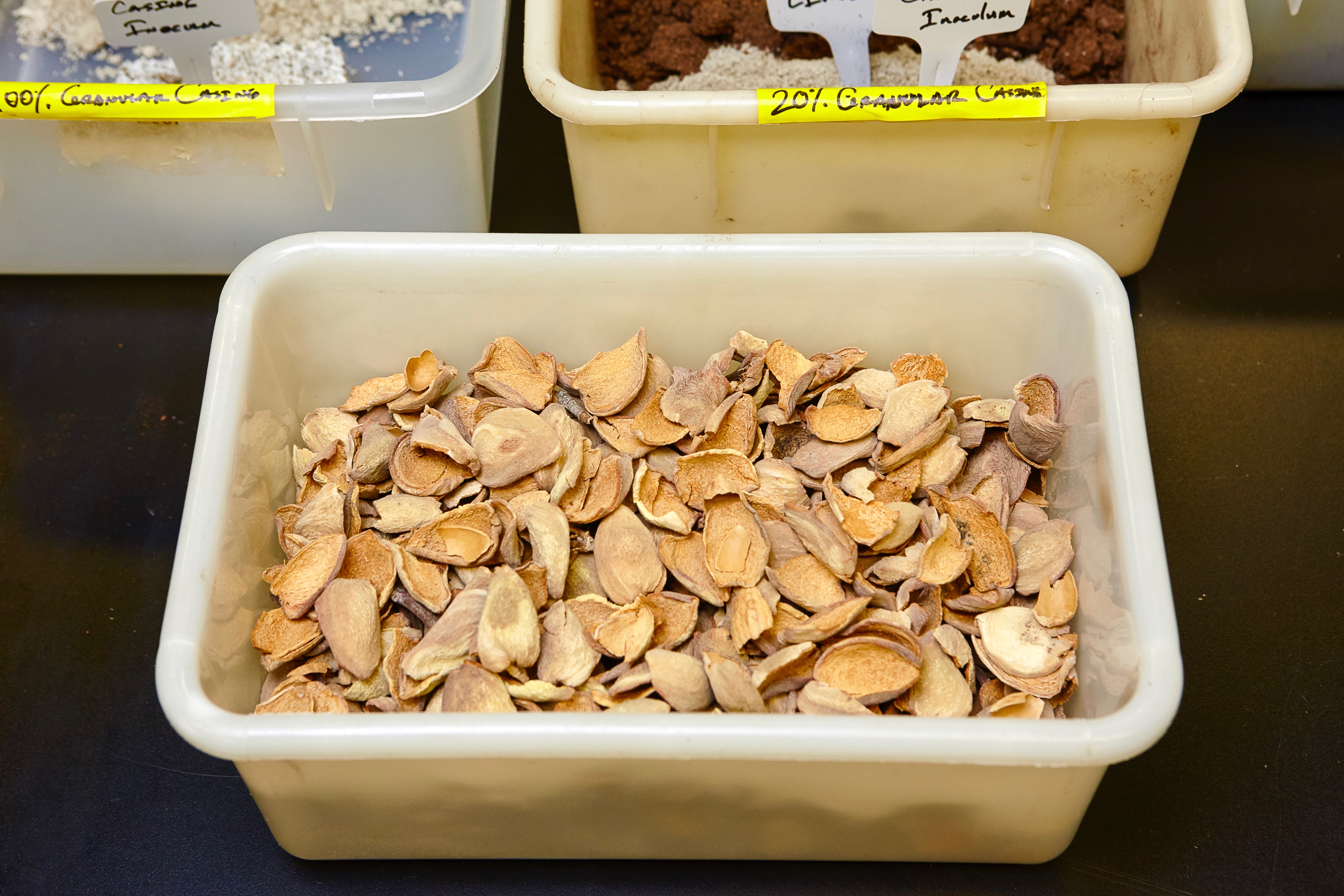Did you know that almond trees grow multiple products? In addition to the kernel that we eat, almond trees also produce coproducts – the hulls and shells that protect the nut during its development.
These almond coproducts have been utilized in responsible and sustainable ways for decades as dairy feed and livestock bedding, and now, with support from Almond Board of California, USDA researchers are exploring a range of new and innovative applications to help bring additional value to the California economy, the local environment, and support the California Almond community’s zero waste approach.
“For every pound of almonds we produce, we get two pounds of hulls,” says Danielle Veenstra, an almond farmer and Almond Board staffer. “We’re always trying to figure out the best use of these.”

A new Fast Company article profiles the innovations USDA scientists are testing to help maximize the use of almond coproducts. These include:
- Extracting sugar from almond hulls that can be used as a fuel source, to make a hard cider, beer, or tea, or feed honey bees in winter when food is scarce, as an alternative to the high-fructose corn syrup currently used
- Using almond hulls that have had sugar removed as a medium to grow specialty mushrooms, replacing peat moss which is typically imported from other countries
- Transforming almond shells into a charcoal-like black powder that makes bio-based or recycled plastics stronger, makes plastic dinnerware stable enough to survive boiling water, or used as a coloring agent for tires
Read the full article to learn more about the innovations that the USDA and Almond Board are exploring with almond coproducts: This USDA Lab Is Turning Billions Of Pounds Of Almond Waste Into Beer, Plastic, And Power